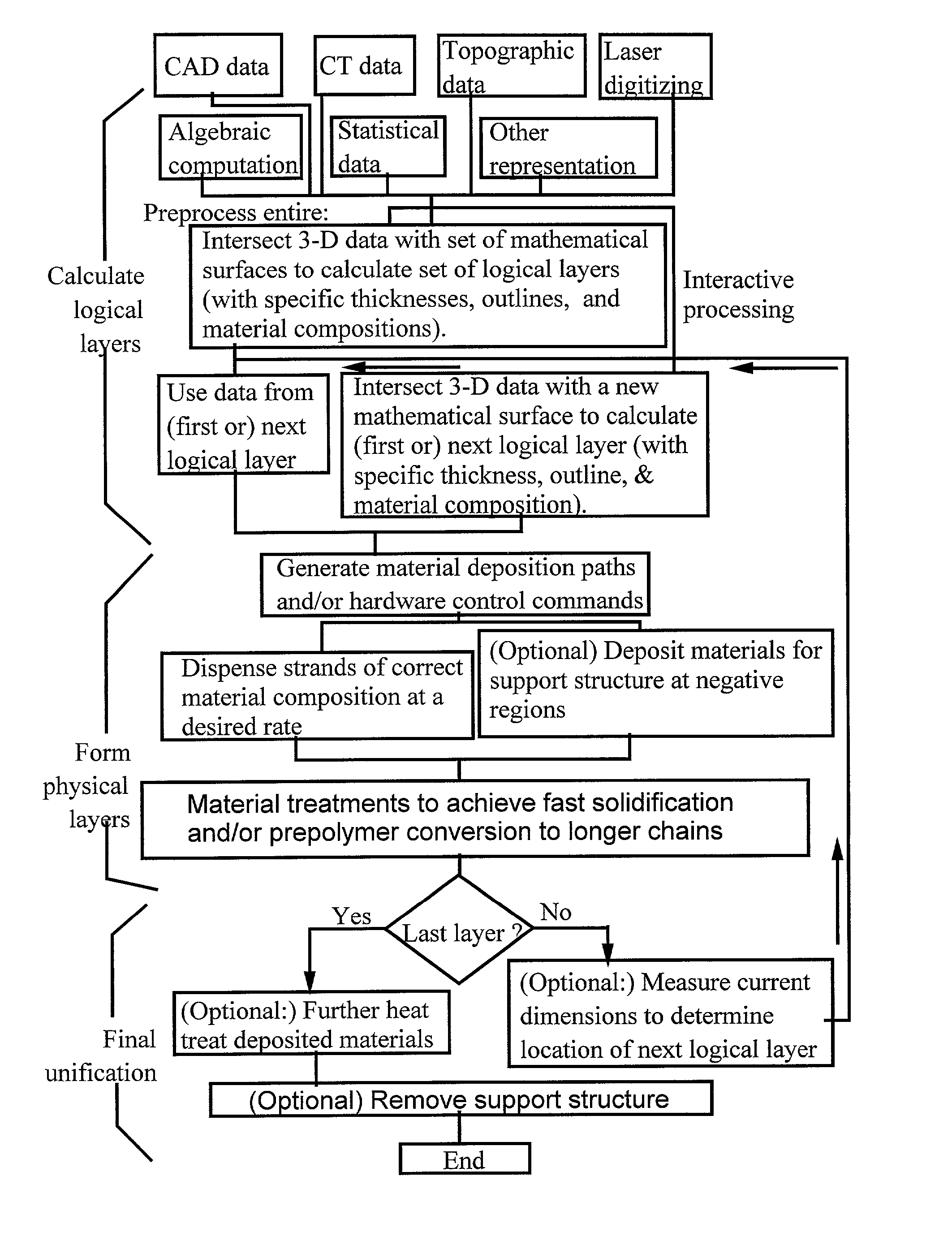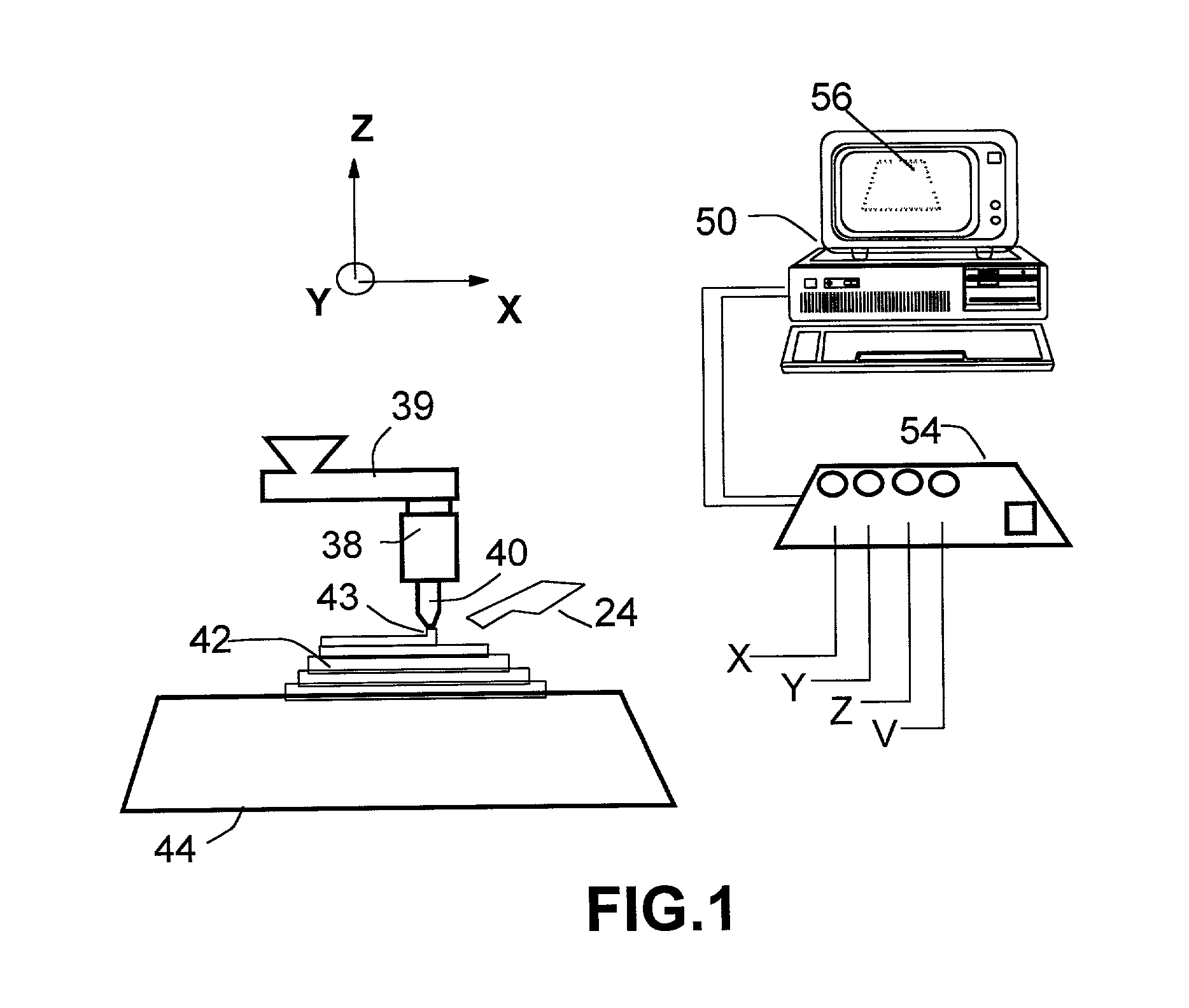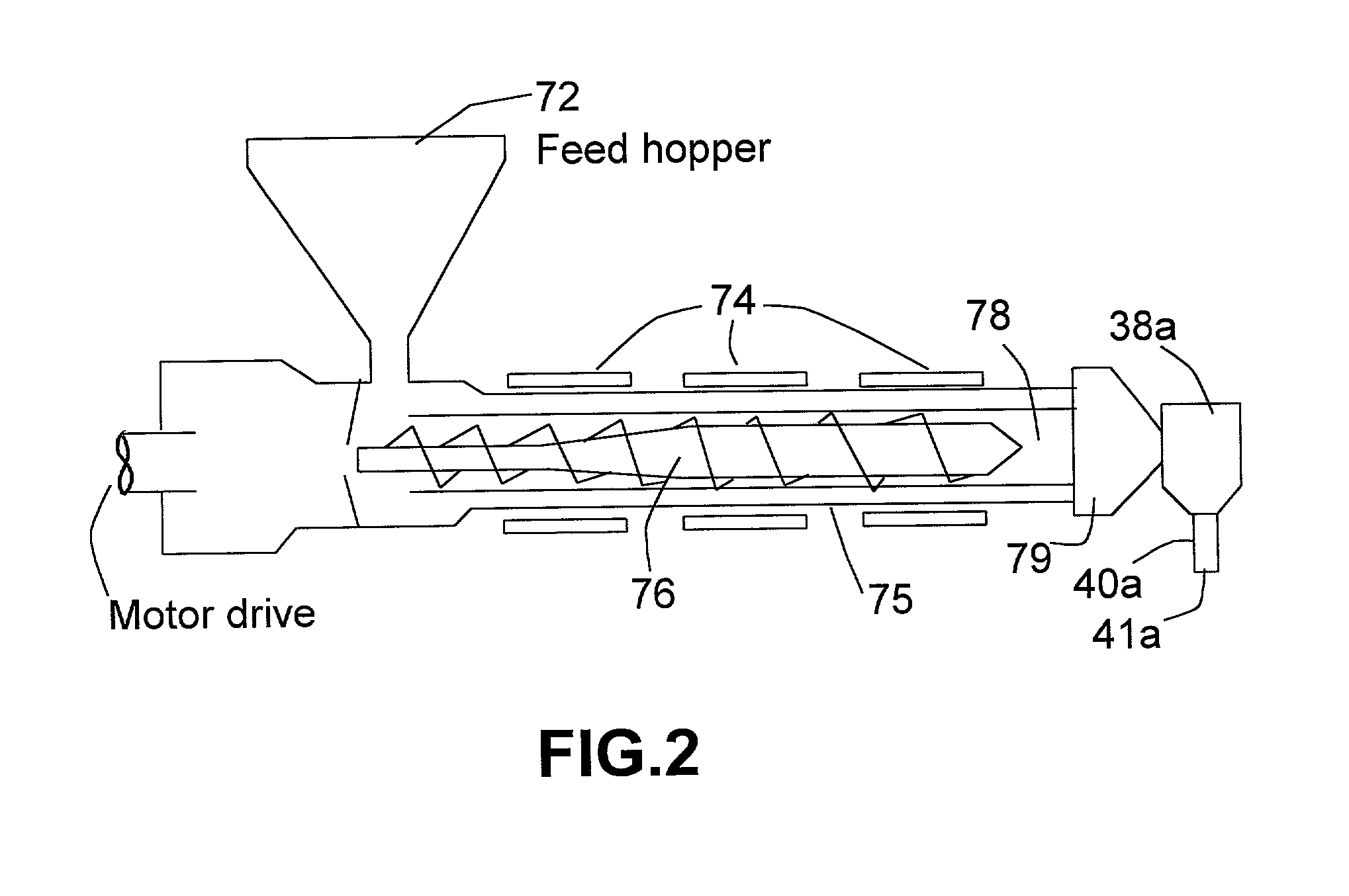Freeform fabrication method using extrusion of non-cross-linking reactive prepolymers
a reactive prepolymer and extrusion technology, applied in the field of freeform fabrication methods, can solve the problems of high temperature, high temperature of thermoplastic melts, and relatively difficult processing of thermoplastic melts, and achieve the effects of rapid prototyping, cost-effectiveness, and high production efficiency
- Summary
- Abstract
- Description
- Claims
- Application Information
AI Technical Summary
Benefits of technology
Problems solved by technology
Method used
Image
Examples
example 2
[0045] Preparation of polyamide 6 / 6 prepolymer from hexamethylene diamine (--R--.dbd.--CH.sub.2).sub.6-- in Eq.1) and adipic acid (--R'--.dbd.--(CH.sub.2).sub.4-- in Eq.1). The monomer mixture with a stoichiometric balance of amine and carboxyl groups was heated at 200.degree. C. to produce a 1:1 ammonium salt, or nylon salt. The prepolymer was prepared by heating an aqueous slurry of approximately 70% of the nylon salt at 200.degree. C. in a closed autoclave under a pressure of approximately 15 atmospheres. This direct amidation process proceeded for approximately 2 hours to obtain an approximately 85% prepolymer conversion. The prepolymer bulk was size-reduced to powder form, which was later used and heated in a dispensing head. Strands of this prepolymer were extruded at 285.degree. C. by a screw extruder onto an object build zone with a Tb=25.degree.-75.degree. C. The solidification of these extruded strands could be allowed to occur at any temperature Tb lower than 200.degree. ...
example 3
[0046] Copolymers of Polyethylene Terephthalate and Polyoxyethylene Glycol. The monomer mixture of dimethyl terephthalate and ethylene glycol at an 1:1 ratio was mixed with a desired amount of polyoxyethylene glycol (Mw=2800 g / mole) and a trace amount of titanium oxide as catalyst. The reacting mass was heated at 200.degree. C. for approximately 4 hours in a vapor bath with the methanol being distilled and collected continuously. The resulting prepolymer was maintained at 275.degree. C. in a screw extruder for a predetermined length of time (between 10 and 60 minutes under a nitrogen blanket). The strands were then dispensed to an object-building zone at room temperature. The resulting multi-layer body was then placed in a vacuum oven at 200.degree. C. for one hour, 230.degree. C. for two hours, and 250.degree. C. for three hours.
Type 2 Prepolymers (Linear Oligomers Prepared by Ring-opening Polymerization of Cyclic Monomers)
[0047] The second type of prepolymers that can be employed ...
examples 4a-4d
[0049] Prepolymers for Nylon 6. The production of nylon-6 via ring-opening of .di-elect cons.-caprolactam may begin with the preparation of a prepolymer under the conditions specified in Table 1. Sample 4-a prepolymer was prepared by the sodium hydride-catalyzed ring-opening polymerization of caprolactam at 230.degree. C. for 30 minutes. The reacting mass was subsequently quenched to -50.degree. C. to substantially freeze the polymerization. This oligomer sample remained in the solid state at room temperature, 23.degree. C. This prepolymer was blended with a small amount of activator (0.5% N-acylcaprolactam) and the resulting mixture was re-heated back to 100.degree. C. inside the resin reservoir of a gear pump. The prepolymer liquid was extruded at this temperature Te=T.sub.l=100.degree. C. out of a dispensing nozzle to the object-building zone above the support member; this build zone being maintained at Tb=160.degree. C. At this temperature, the dispensed prepolymer strands under...
PUM
| Property | Measurement | Unit |
|---|---|---|
| temperature | aaaaa | aaaaa |
| temperature | aaaaa | aaaaa |
| temperature | aaaaa | aaaaa |
Abstract
Description
Claims
Application Information
 Login to View More
Login to View More - R&D
- Intellectual Property
- Life Sciences
- Materials
- Tech Scout
- Unparalleled Data Quality
- Higher Quality Content
- 60% Fewer Hallucinations
Browse by: Latest US Patents, China's latest patents, Technical Efficacy Thesaurus, Application Domain, Technology Topic, Popular Technical Reports.
© 2025 PatSnap. All rights reserved.Legal|Privacy policy|Modern Slavery Act Transparency Statement|Sitemap|About US| Contact US: help@patsnap.com



